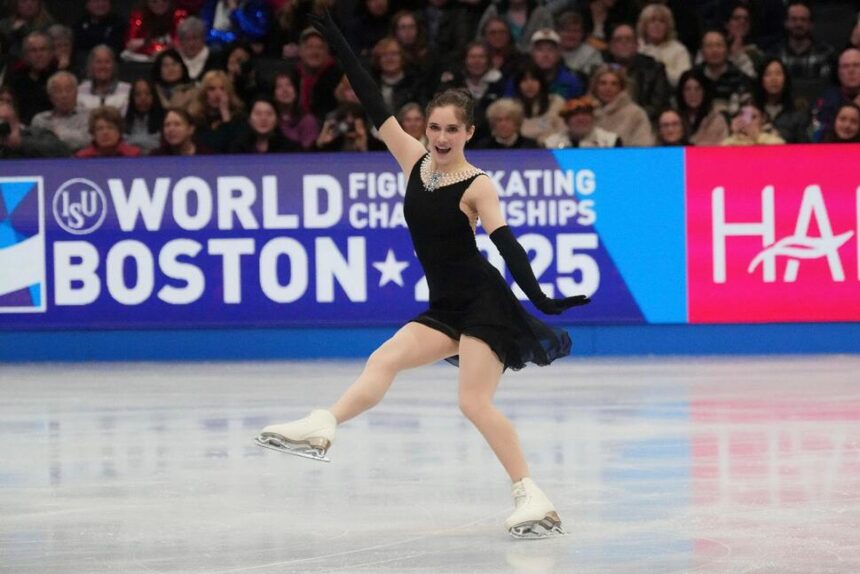BOSTON (AP) — Ashley Wagner and Ben Agosto know what it’s like to step off the ice at the figure skating world championships and feel as though they’ve conquered the sport. And what it feels like when the notoriously fickle sport bites back.
So when the International Skating Union put in motion its ambitious “Vision 2030” plan, which is designed to grow and expand the sport through improved fan engagement, it made sense that they would call Wagner, a three-time U.S. champion and former world silver medalist, and Agosto, who won an Olympic silver medal with ice dance partner Tanith Belbin.
If anyone was going to interview athletes at this week’s world championships at such an emotionally raw moment, the minute after their programs have concluded, it ought to be someone who has been through it themselves.
“I would have loved this when I was an athlete, to have the post-skate interviews right in the kiss-and-cry, when the emotions are so fresh,” Wagner said. “That’s something being brought into this production. We’ve never seen anything like it.”
Look closely, and you might notice a lot of things never seen before at this week’s worlds: cutting-edge LED dasher boards surrounding the rink, grand entrances for the athletes, and more energetic music — like the rocked-out version of “I’m Shipping Up to Boston” by the Celtic punk band Dropkick Murphys that keeps blaring inside TD Garden.
The idea is simple: The ISU wants to make figure skating feel cool again.
Those who love the intricate, nuanced sport — the spins and jumps, the brilliant landings and bitter falls — tend to follow it year-round. But there are just as many fans that tune in once every four years, during the Winter Olympics, when like a shooting star the athletes spring onto the public consciousness and then fizzle as soon as it ends.
“Skaters are the reason why this sport exits,” explained ISU president Jae Youl Kim, who granted The Associated Press a behind-the-scenes tour of the world championship setup Thursday, shortly before the start of the men’s short program.
“We are so proud of our athletes and we want to make sure we shine a brighter, stronger spotlight on our skaters.”
That is why those brilliant LED dasher boards are showcasing each athlete’s social media tag, and why each is being introduced individually for the first time, something track and field and other Olympic sports have embraced over the years.
The ISU wants to create a spectacle for the 14,000-plus fans in the arena, along with the millions watching around the world.
“There’s much more to come. I mean, we can brainstorm here a lot about potential marketing and sponsorship activations as well,” said Wieland Lüders, who manages the world championships for the ISU. “Each skater has their own partners, potentially, so there are many more thoughts. But for now, we are just at the beginning. This is the basic concept.”
In the future, the Vision 2030 plan hopes to improve the TV presentation, simplify the sport’s complex rules, increase sponsorship and expand revenue streams. It will also promote skating through grassroots initiatives, reimagine the season-long calendar, and explore new technology that could help to usher the sport into the modern era.




